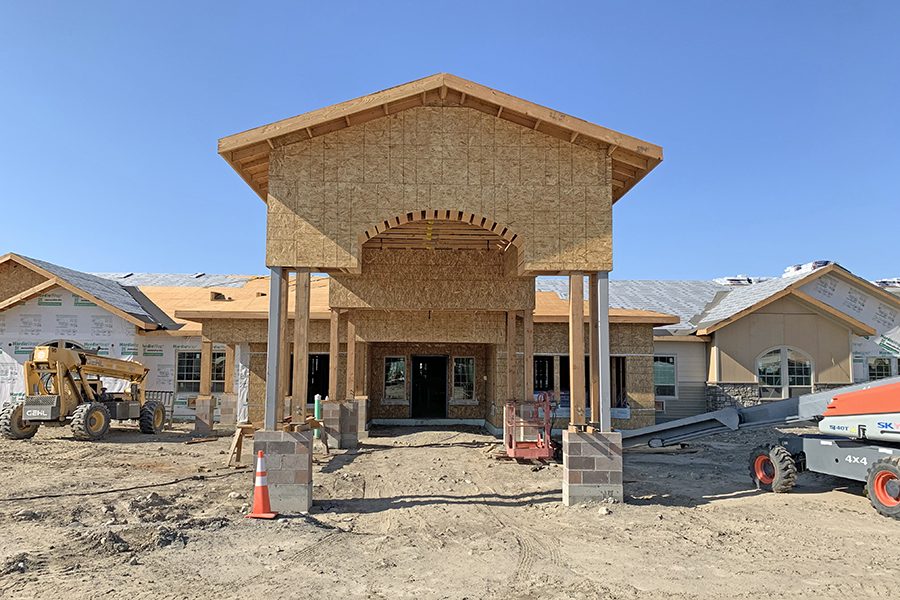
Tri-Cities’ hot market attracts outside buyers
By Andrew Kirk
A woman from Hawaii recently bought a home in Tri-Cities with cash and outbid other buyers by $10,000.
Real
estate shoppers from Seattle, Portland, California and beyond are a growing
trend in Tri-Cities, said Dave Shinabarger, president of the Tri-City
Association of Realtors.
Lance
Kenmore of the Kenmore Team in Kennewick said his office is getting about
15 percent to 20 percent more calls from outside of the state than
usual—for commercial, residential and property management services.
Shinabarger
said the buyers are selling property in their markets and buying here in cash.
Not only can they “sell high, buy low” comparatively, but in the Tri-Cities
they can expect healthy appreciation over 30 years. And in the meantime, they
can collect reliable rents in the market, thanks to its 1 percent vacancy
rate, he said.
Commercial
real estate agent Charles Laird of Tippett Company in Pasco said outside
investors buying buildings here is not new. For years they’ve looked for
opportunities in this area when they didn’t like what they saw in their own
cities, he said. The amount of activity in the last two years is what’s
different, he said.
“I’m
quite surprised by the amount and pace of activity that’s occurring,” Laird
said.
Making
those national lists of “best places to live” and “cities with lowest costs of
living” grabs the attention of investors who are looking for multi-family
dwellings or commercial property, said Ben Murphy, a property manager with SVN
Retter and Company in Kennewick. Partly it’s the region’s strong economy but
also it’s just a sign of growth, he said. In the 1990s, the majority of
building owners were local. Now it seems most are regional, he said.
More
office buildings and shopping centers from regional and national developers
comes with population growth, said property manager Jerry Abrams of Jerry D.
Abrams Company Inc. of Richland.
“We’re
on the map. We’re getting noticed,” said Mark Trout of Retter & Company
Sotheby’s International Realty. “They cite our economy, the potential for
appreciation, the favorable vacancy rates for rentals. It makes good business
sense.”
Vista
Pointe Developments has taken notice of the area. The company is building
Windsong at Southridge—a 56-bed, $6.1 million memory-care facility on Quillan
Place and 24th Avenue off Highway 395 in Kennewick. Vista Pointe owns
memory-care homes in Colorado and Oregon. This is their first project in
Washington state.
“We
do a thorough look-around to see where we want to grow,” said Don Harris, a
developer with Vista Pointe. “Tri-Cities is growing and it’s not oversaturated.
… I like the area.”
Wes
Romine, development services manager for city of Kennewick, said there’s
definitely an uptick in outside firms seeking applications to build commercial
buildings. It’s always happening—like the national chain At Home taking the
place of Shopko on Columbia Center Boulevard. He said there’s been a definite
increase, and many are seeking permits to build and service the health care
industry serving the area’s growing senior population.
Holly
Logan, communications and marketing manager for city of Richland, said she has
no data on where applicants are from, but agreed there’s been a noticeable
increase in applications in 2019 alone.
It’s
interesting that people turned homes into rentals during the great recession
out of necessity, and now it’s a trend for investment purposes, said Michael
Erickson of Crown Property Management of Kennewick. But the only significant
increase in out-of-area clients he’s seen is for smaller-scale commercial
properties and multi-family dwellings. He believes there are fewer options for
those investments in Seattle, Portland and California right now.
What
does all this mean for Tri-City residents?
Kenmore
said it’s definitely having a “creeping” effect on the median sale price. In
May, the median home price was $302,900.
When
out-of-state developers compete with west side firms for commercial property,
or out-of-market investors compete with locals and transplants for homes, the
supply-and-demand result is median prices creep up, he explained.
The
local real estate market is so hot right now because the population is growing,
but the supply of housing isn’t keeping up with demand. That means there are
only 500 to 600 homes for sale most months and turnaround is fast.
The
Tri-City Association of Realtors reported the median sale price in August 2016
was $229,000. A year later it was $250,000. Last year it was $292,000.
“The
market began heating up three years ago,” Shinabarger said. “It’s still
double-digit appreciation and that’s expected to continue through June 2020.”
This
time next year the market is predicted to cool a little, and some evidence of
that is already showing this summer, he said. But year-to-year appreciation
could still exceed 7 percent in the near future.
“A
lot of equity was created in the last three years,” Kenmore said.
Erickson
said the present market puts his mind back to the previous decade and the
recession. But even though current levels of appreciation aren’t sustainable,
he was quick to clarify he is not pessimistic about the future.
The
people who could be adversely affected are those making $20 an hour or less and
hoping to save up for a home with 1,500 square feet, Shinabarger said. Those
properties are up to $250,000 right now.
The
solution is city and county incentives for creating the right kind of
affordable housing, he said.
Too
many people seeking public office think affordable housing means tall apartment
buildings and smaller lot sizes, Shinabarger said. This isn’t what the Tri-City
market is calling for, he said.
Incentivizing owners to renovate less-desirable properties in older
neighborhoods is a good option, as is tearing down old homes and building anew
on the lots. Considering the need for inter-generational housing in Tri-Cities,
allowing more auxiliary dwellings to be adjacent to or behind existing homes is
another solution, he said, adding that making smart decisions while respecting
market trends is how more people can get in on the current appreciation.
